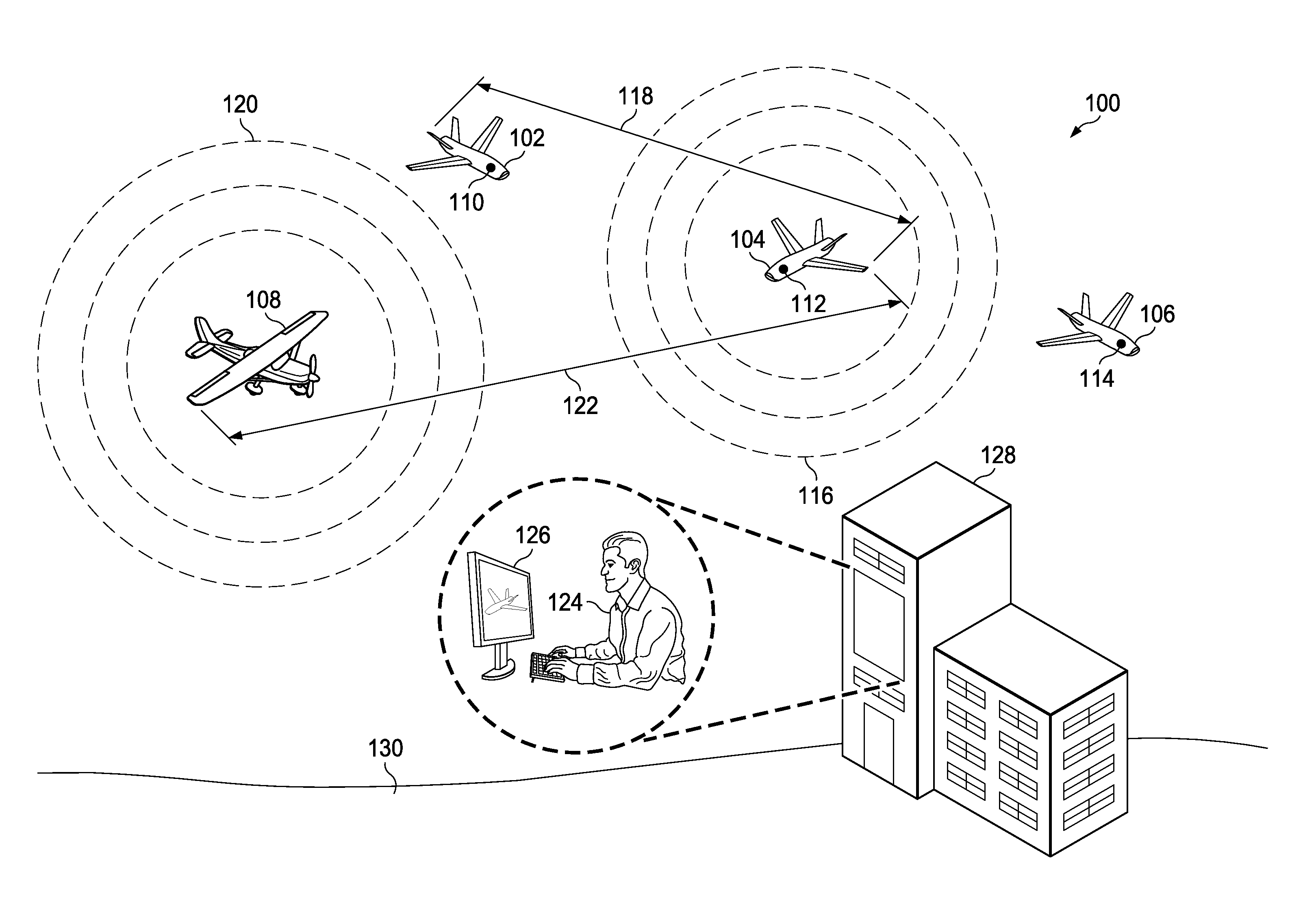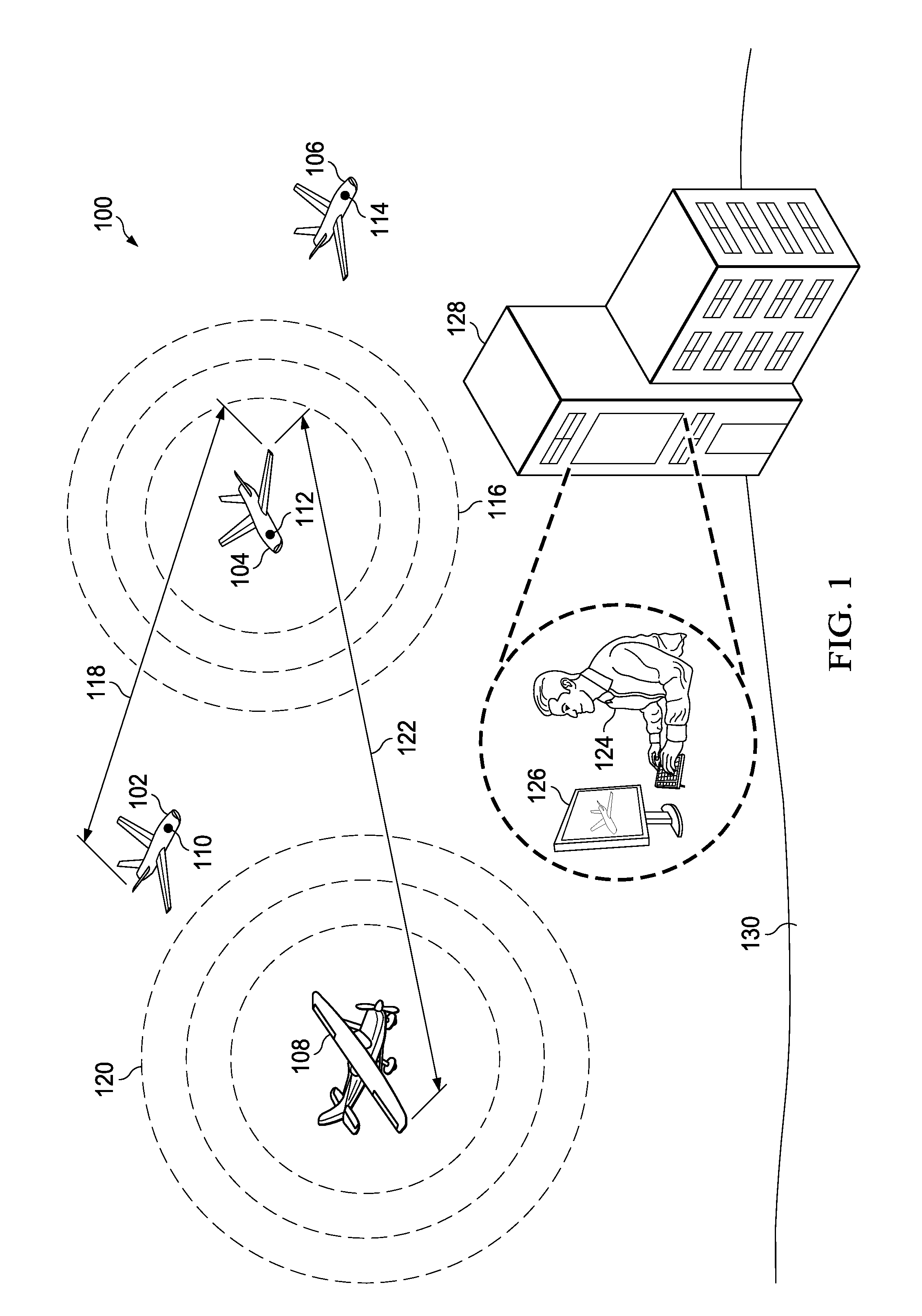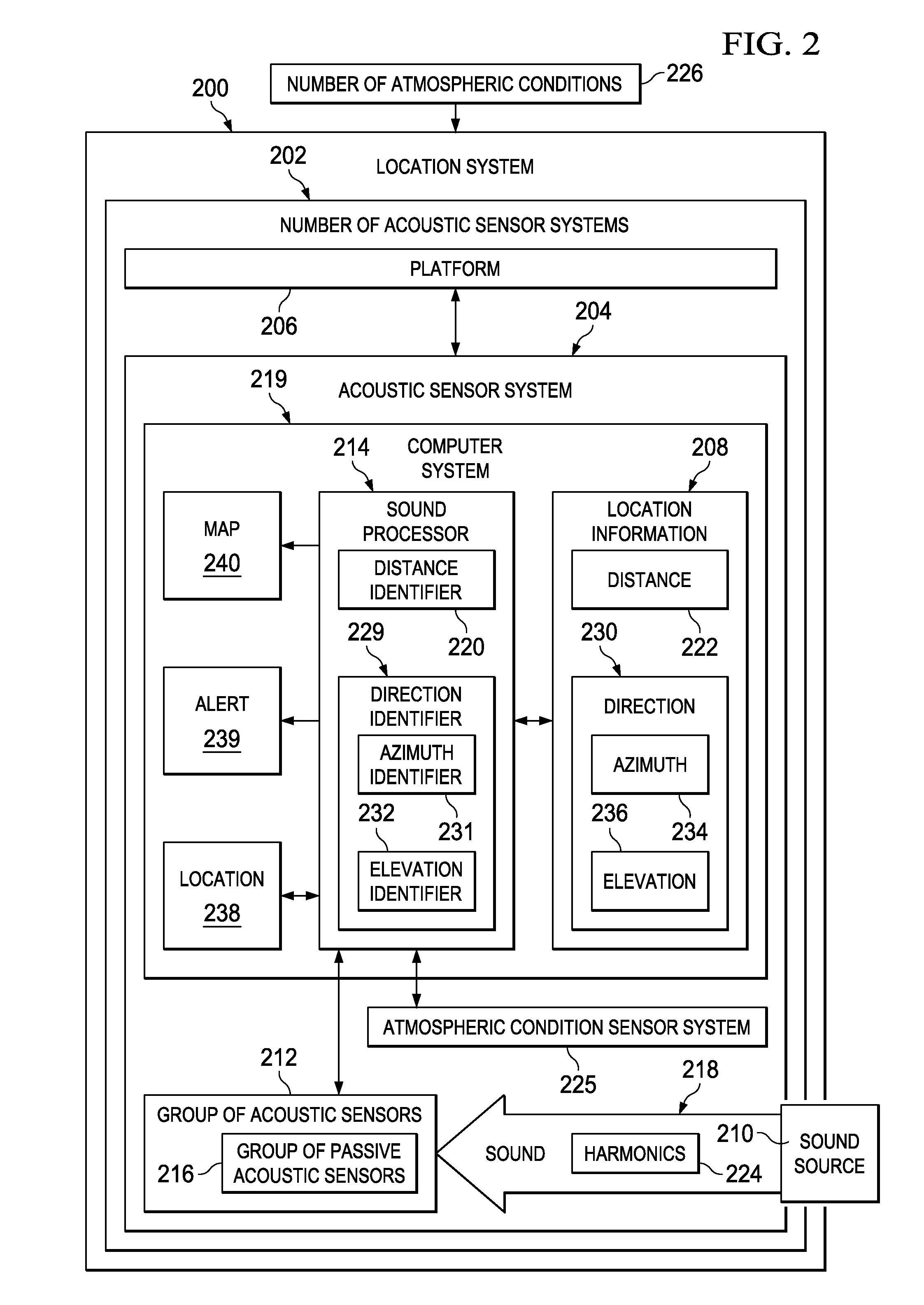Acoustic Ranging System Using Atmospheric Dispersion
a technology of atmospheric dispersion and ranging system, applied in the field of acoustic systems, can solve the problems of undesirable use of sensor system in unmanned aerial vehicles, unmanned aerial vehicles using radar systems may be detected by undesired parties, and undesirable detection of unmanned aerial vehicles
- Summary
- Abstract
- Description
- Claims
- Application Information
AI Technical Summary
Benefits of technology
Problems solved by technology
Method used
Image
Examples
Embodiment Construction
[0021]The illustrative embodiments recognize and take into account one or more different considerations. For example, the illustrative embodiments recognize and take into account that with aircraft, identifying a distance to another aircraft may be useful in managing flight of the aircraft. For example, knowing a distance and direction from one unmanned aerial vehicle to another unmanned aerial vehicle may be useful to perform collision avoidance between the unmanned aerial vehicles. This collision avoidance may be performed automatically by a controller or by an operator.
[0022]The illustrative embodiments recognize and take into account that when an active sensor system such as a radar system is undesirable, passive sensor systems may be used. For example, a passive sensor system may be a passive acoustic sensor system.
[0023]The illustrative embodiments recognize and take into account that passive acoustic sensors, such as microphones, may be used in identifying a direction to a so...
PUM
 Login to View More
Login to View More Abstract
Description
Claims
Application Information
 Login to View More
Login to View More - R&D
- Intellectual Property
- Life Sciences
- Materials
- Tech Scout
- Unparalleled Data Quality
- Higher Quality Content
- 60% Fewer Hallucinations
Browse by: Latest US Patents, China's latest patents, Technical Efficacy Thesaurus, Application Domain, Technology Topic, Popular Technical Reports.
© 2025 PatSnap. All rights reserved.Legal|Privacy policy|Modern Slavery Act Transparency Statement|Sitemap|About US| Contact US: help@patsnap.com



